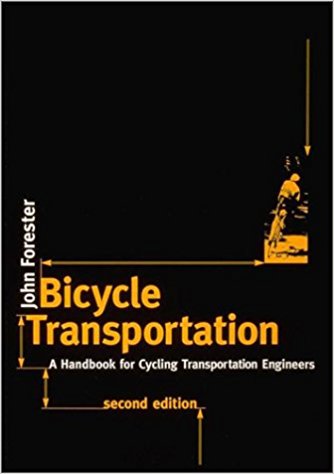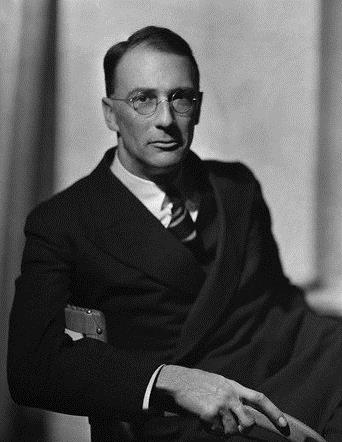
No one knows more about bicycle safety than this guy. John Forester has devoted much of his life to advocating for commonsense legal reforms, having had unnecessary regulations eliminated. He’s also the son of a world-renowned novelist.
By trade you’re an industrial engineer. In terms of work, what exactly is that?
Industrial engineering is the science and art of producing useful results at low cost. In the business world there are more failures than successes, and I have seen my share.
I worked on the first Minuteman ICBM [intercontinental ballistic missile]. My first responsibility was in the testing, care, and handling of the electronic components, to be sure they were satisfactory and then would not be damaged by the process of installing them into the computer and other parts of the missile. Later I was responsible for the flight control equipment, the parts of the missile that moved the rocket nozzles to steer the missile. In the course of these duties I observed the attempt to sell the flight computer as a commercial product. It was the first desk-sized computer built, and could have had commercial use. But the project designers sought to sell it like selling an aircraft design to the Air Force, as in requiring the purchasers to buy and stock their own spare parts. They didn’t sell a one.

Another failed project was large-sized shrink tubing. I was chief industrial engineer for the firm that invented shrink tubing, as in the tubing that can be slipped over soldered joints in wire and then shrunk into place by applying heat. The firm designed and built the machines that expanded the tubing so it could be later shrunk into place. This was in the early days of computing, when one could purchase time on a big computer and connect to it over phone lines. The firm had 25,000 different products, but many were just different colors. I was supposed to develop the process accounting of about 5,000 products, and I worked out a system for my engineers to do that using timeshared computing. So I had a good picture of the firm’s manufacturing operations and costs.
The firm had been continually increasing the size of the tubing produced, looking toward making tubing to protect the welds that joined sections of oil pipelines, maybe two feet in diameter. That required larger and more expensive expanders, and the larger they were the slower they worked. I considered the possible production methods and their costs, and I foresaw that it would be cheaper to wrap the welded joints with adhesive sealing tape than to pay the costs of making that size of shrink tubing.
Designing and building large expanders took up a quarter of the manufacturing budget, so when I said that that was a useless endeavor I got fired. If you look up that firm today, it is the subsidiary of another, and the largest size of tubing it produces is for four-inch pipe.
While not in any way responsible, I observed the industrial engineering failure to consider the way to use the first desk-sized computer, which failure produced the failure of the complete project. In the case of the large tubing expanders, I properly applied industrial engineering techniques to evaluate the process, and my prediction that large tubing expanders had no commercial future has been thoroughly proved by history.
I have other stories, but two are sufficient.
From an early age you have been riding bikes. When did your inner bicyclist surface?
I have been told that I am a fourth-generation cyclist. When I was six, I mastered the skill of descending our back lawn, turning around before hitting the rosebushes, and climbing back up again. Once I had that skill, I was allowed out on the London streets, in a society that believed that all roadway users had to obey the same rules of the road. When I was eight, I was cycling three miles to school, up and over the ridge of hills that bound London’s valley.
Dubbed “the father of the ‘vehicular cycling’ movement – a philosophy that views the bicycle as a form of transportation that belongs on the streets alongside cars” (Los Angeles Times), you’ve formulated safety theories and created an all-inclusive guide. How do your views differ from conventional norms?
I start by listing the normal American views about cyclists, as exemplified by societal opinions, traffic law, and bikeway building.
1.) Cyclists are trespassers on roads built for motorists.
2.) Cyclists are not capable of obeying the standard rules of the road.
3.) The greatest danger to cyclists is same-direction motor traffic.
4.) Therefore, cyclists, lest they be killed by motorists, must stay out of the way as much as possible, at the edge of the roadway or, better, off it entirely.
History shows that these views were invented by American Motordom, which is the group of organizations devoted to promoting motoring. Its most powerful members are the auto clubs and the traffic police. Motordom started this program about 1925. Motordom managed to persuade the public of the truth of these views by promoting the fear of same-direction motor traffic. Motordom succeeded so well that this fear, for or in cyclists, of same-direction motor traffic is so overwhelming that it defies the disproving scientific knowledge and has, therefore, become the cyclist-inferiority phobia.

When I arrived in California, all this was unknown to me. I observed that the typical American bicycle, for children of course, looked like a toy motorcycle with fat heavy tires and seating too low for effective pedaling.
When time came for my first American bike, new bicycles were reserved for war workers, so I was given a rebuilt American middle-weight bicycle. Soon I was descending the roads to downtown going as fast as the cars and acting the same as their drivers. This felt completely normal for me. The ride on the climb back was different.
For all the cycling I have done in America since then, experience has shown that acting like all the other drivers, the motorists, is far better than cycling in the frightened cyclist-inferiority style that is the official requirement. Those I cycled with also came to this understanding; club cyclists rode in the vehicular way because that worked best for them.
JohnForester.com is dedicated to cyclers’ rights. “Since 1944,” you argue, “American society has disapproved of lawful, competent cycling.” Another key point:
“With the government spending more and more money on bikeway programs, lawful and competent cyclists are being more and more limited to operating on bikeways that are unsuitable for lawful and competent cycling.”
JohnForester.com
Having challenged, sometimes successfully, legal regulations in court, why have you made cyclist advocacy your passion project?
I was an enthusiastic cyclist as much as possible outside of family responsibilities. Once those diminished, I was cycling with clubs most weekends, doing some occasional racing, making a few multi-day cycling tours, and designing and making gear to improve cycling under all conditions and for all purposes.
In the 1950s cycling was done by those willing to resist the disdain with which society regarded cyclists: losers, social misfits, and such. My experience in different societies had led me to view social norms with a skeptical eye; some of my cycling associates had had similar experiences. We all cycled for the enjoyment of cycling, no matter what society thought. Then, in the 1960s, demographic and social changes made cycling popular again, and society reacted against it.
The consumer safety movement listed bicycles as the most dangerous consumer product, and Motordom worried that a plague of cyclists would block up the roads intended for motorists. Because real bicycles were too dangerous, the U.S. Consumer Product Safety Commission decided that all cyclists had to ride the toy bicycles that the American industry produced for children. California’s Motordom decided that cyclists must use only the edge of the roadway, or off it wherever a side path existed, and always defer to motorists. These were obviously obnoxious threats. This was just after the big expander crisis described above and I had spare time and savings to fight them. So I did.
I roused up cyclists against the child’s bicycle regulation and conducted engineering analysis of the proposed safety requirements. Many had no relationship to safety and some were completely disproved by using Newton’s laws of motion. However, there was such strong demand for such a regulation that the result kept the useless requirements but modified the regulation so it would no longer prohibit real bicycles. The only safety effect was adverse: to promote a front reflector which looked like a headlamp but cannot perform the safety effect of a real headlamp.

I roused up California’s cyclists to oppose the oppression that California’s Motordom attempted to impose. I provided the engineering analyses that demonstrated the errors in Motordom’s program. The debate led to the first, and only, statistically robust study of car-bike collisions (the Cross report). That study completely disproved Motordom’s argument that same-direction motor traffic was cyclists’ greatest danger, causing only 5% of car-bike collisions, while turning or crossing movements caused the other 95%. Furthermore, teaching school children and then measuring their obedience to the rules of the road on real roads in real traffic demonstrated that obeying the rules of the road while cycling is no more difficult than learning and obeying the rules of soccer. Thus all Motordom’s pseudo-scientific arguments for motorist-supremacy/cyclist-inferiority were disproved. The result was a compromise that became the basis of the American system of traffic law and bikeways. Motordom lost its power to kick cyclists off the roadway onto side paths, and its power to restrict cyclists to only the edge of the roadway was restricted by limits enacted in the statute so that enforcement of Motordom’s desire became really difficult.
As the oldest son of British novelist C.S. Forester (CSF) of Hornblower series fame, writing seems to be genetic. You’ve studied English and authored a biography. What was it like growing up with, discovering family secrets about, and formally reflecting on your dad?
I became interested in Hornblower stories before the first was published. At the age of seven I was helping my father ensure that all three copies of the page proof held identical corrections, and the story intrigued me. Later on I learned, from experience, that the stories that my father wrote made him famous. Still later, when I was studying English literature with the distant prospect of becoming a professor, I had to work out CSF’s place in literature. While a considerable portion of the public adored his stories, the academic world did not consider them worth studying. His stories were so simple that they failed to provide meat for the academic grinder.
One could say that CSF told one story at a time in as straightforward a manner as he could. He left out subsidiary stories and he avoided the intellectual fads that pose as philosophy. According to him, “Philosophy is a blind man, in a darkened room, looking for a black cat that isn’t there.” He disliked the novels of Dickens, and he derided the novels being published in his time that carried a message based on intellectual theory. History was different. By telling facts, history could send a message, but the factual base was all important.
So that was my formal evaluation of CSF’s work in literature. I have much the same view. By the time that I had completed a bachelor’s in English, my view of the intellectual pretensions of the professors of English had destroyed all desire to become a professor in that subject. That’s just as well, because, had I succeeded in that desire, I would have been in a field that then fell into much greater intellectual absurdity than I had observed earlier. I loved my father, as well as respecting his work for what it was. He presented the attitude of the Enlightenment, the attitude in history that I had come to believe was indeed enlightened. If you want to say so, CSF presented himself as his character Hornblower. Even so, there were several events so peculiar that they were unexplainable, such as why my brother, three years younger than me, was pulled out of the East Coast preparatory school we attended, pulled out because I chose to attend UC Berkeley.

And then CSF died. After his death, strange documents started to emerge. His will proved that he had been lying to me for thirty years. His letters to my mother told a rather different story. The unpublished autobiography by his eldest brother told still another. The letters he had written to his mistress Frances Phillips told another.
I was heartbroken. These documents, coupled with my experiences of living with or near him for thirty-five years, demonstrated a different character. He used his storytelling gift to manipulate the people around him to, in secret where necessary, fulfill his selfish desires without regard to the welfare of others. Those who were in a position to detect his behavior became excluded from CSF’s circle and were left wondering why.
My obvious pain and my expressions of it were interpreted, reasonably enough for those who did not know the facts, as caused by being short changed in the distribution of his estate. Both my brother and I were nastily shortchanged in that distribution, but, as my father had specifically told me, I had not expected that there would be much in his estate. My pain was caused purely because everything I had believed about the father that I had loved had been proved, beyond doubt, to be totally incorrect.
I first met Frances Phillips when I arrived in New York at the age of ten. She was the editor of William Morrow, publishers, and a very likable lady. She took me on a tour of the industry that printed and bound books, a tour that I remembered for years. Much later, when I was sixteen and she was visiting my father in Berkeley, I had spent with her several afternoon hours cuddling and kissing on the living room sofa while my father took his afternoon nap. After my father died, I told her, in our last telephone conversation, that I had not expected much from my father’s estate because he had always told me that he spent what he earned. Indeed, he lived lavishly when he visited England or toured in other nations. Frances’s reply was: “You were a fool to have believed what your father told you.” That reply may have been the most painful part of that whole business.
Biography
- JohnForester.com personal website
- Wikipedia entry for “John Forester (cyclist)”
- Good Reads author profile
- L.A. Times op-ed
- Thought Co. interview
Books
- Effective Cycling
- Bicycle Transportation: A Handbook for Cycling Transportation Engineers
- Novelist & Storyteller: The Life of C. S. Forester
John Forester is an industrial engineer, vehicular cycling advocate, and writer.
Like loads of detail? You’ll love our chat with baby-changing table inventor Tim Burt.